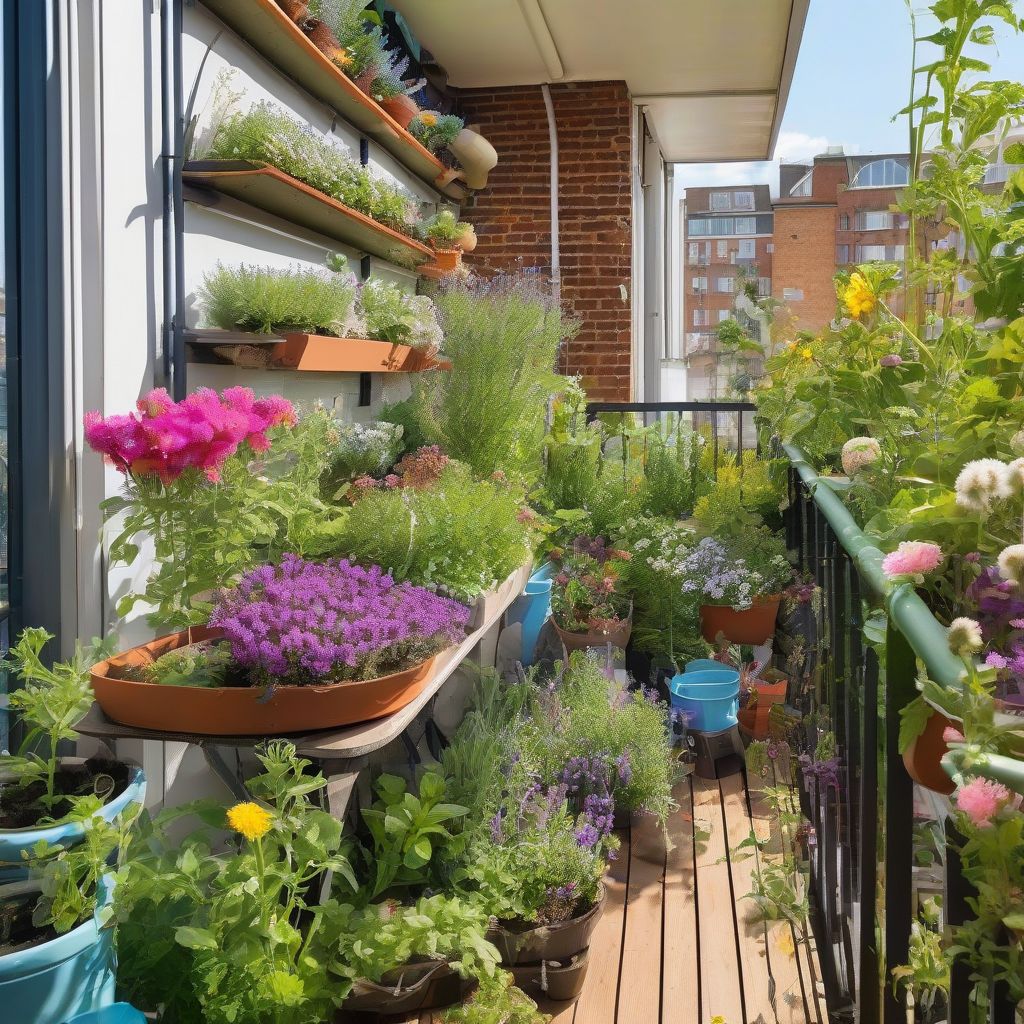Imagine stepping out onto your balcony, a warm breeze carrying the scent of herbs and the gentle hum of busy bees. This isn’t a scene from a countryside cottage, but your very own urban oasis, teeming with life and bursting with colorful blooms that nourish both your body and soul. You too can experience this by transforming your urban space into a haven for pollinators, attracting these essential creatures while reaping the rewards of a thriving, fruitful garden. This guide will show you how!
Understanding the Importance of Pollinators in Urban Environments
Before we dive into creating your pollinator paradise, let’s address why attracting these tiny helpers is crucial, especially in urban settings. Pollinators, including bees, butterflies, hummingbirds, and even bats, play a vital role in our ecosystem. They are responsible for fertilizing a significant portion of the plants we rely on for food. Sadly, factors like habitat loss and pesticide use threaten their populations.
By creating pollinator-friendly urban gardens, you’re not just beautifying your surroundings; you’re providing a lifeline for these important creatures and contributing to a healthier planet.
Designing Your Urban Pollinator Garden
Creating an urban garden that attracts pollinators involves thoughtful planning and a focus on creating a welcoming environment for these buzzing friends. Here’s what you need to consider:
1. Location, Location, Location: Choosing the Right Spot
- Sunlight: Most flowering plants that attract pollinators thrive in 6-8 hours of sunlight daily. Choose a spot on your balcony, rooftop, or backyard that receives ample sunshine.
- Protection from the Elements: Consider any harsh winds, extreme temperatures, or excessive shade that might impact your garden’s success.
- Accessibility: Ensure your chosen spot is easily accessible for watering, weeding, and of course, harvesting your delicious bounty.
 Urban Garden Location
Urban Garden Location
2. Plant Power: Selecting Pollinator-Friendly Plants
The key to attracting pollinators is choosing a diverse array of plants that provide a continuous source of nectar and pollen throughout the growing season.
- Native Plants: Opt for native wildflowers, shrubs, and trees that naturally attract local pollinators.
- Variety is Key: Choose plants with different bloom times, colors, shapes, and heights to cater to a wider range of pollinators.
- Herbs for Flavor and Function: Many herbs, like lavender, mint, and rosemary, are pollinator magnets and add incredible flavor to your dishes!
3. Provide Water Sources
Just like us, pollinators need water to survive. Consider adding a shallow dish with stones or marbles for them to land on while they drink.
4. Create Shelter and Nesting Sites
Pollinators need safe spaces to rest, nest, and raise their young. You can help by:
- Leaving some areas of your garden undisturbed.
- Providing nesting materials like bundles of hollow stems, wood piles, or bee houses.
5. Avoid Pesticides
Pesticides can be harmful to pollinators. Opt for natural pest control methods or choose plants that are naturally resistant to pests common in your area.
Maintaining Your Pollinator Paradise
Once your urban garden is buzzing with life, it’s essential to maintain its allure for pollinators. Here’s how:
- Water Regularly: Ensure your plants are adequately hydrated, especially during hot and dry periods.
- Weed Regularly: Remove weeds that compete for resources and space.
- Deadhead Spent Blooms: Regularly removing faded flowers encourages the plant to produce more blooms, providing a continuous food source for pollinators.
- Observe and Adapt: Pay attention to which plants attract the most pollinators and adjust your plant choices in the following season.
Reaping the Rewards of Your Pollinator-Friendly Haven
Creating an urban garden that attracts pollinators is a rewarding endeavor. Not only will you enjoy the beauty and vibrancy of a thriving garden, but you’ll also:
- Support Biodiversity: By providing food and habitat for pollinators, you’re contributing to a healthier ecosystem.
- Enjoy a More Bountiful Harvest: Many fruits, vegetables, and herbs rely on pollinators for successful fruiting.
- Connect with Nature: Even in an urban setting, gardening fosters a deeper connection with the natural world.
Conclusion
Transforming your urban space into a haven for pollinators is a beautiful and impactful act. By incorporating pollinator-friendly practices, you’re not only creating a vibrant oasis for yourself but also playing a vital role in supporting these crucial creatures and our planet’s health. So, grab your gardening gloves, choose your favorite pollinator-attracting plants, and get ready to enjoy the buzz of life in your very own urban sanctuary!
Do you have any tips for creating a pollinator-friendly garden? Share your experiences and ideas in the comments below!
[amazon bestseller=”pollinator garden book”]
